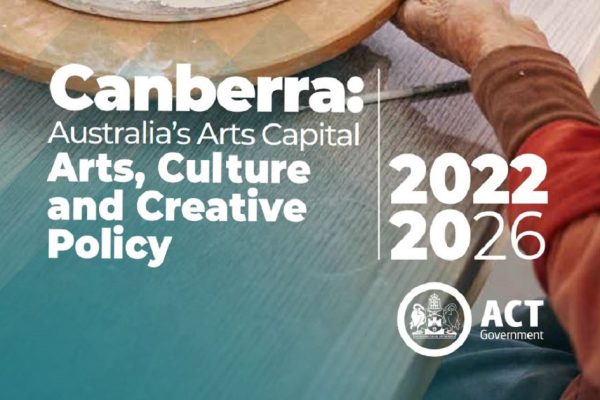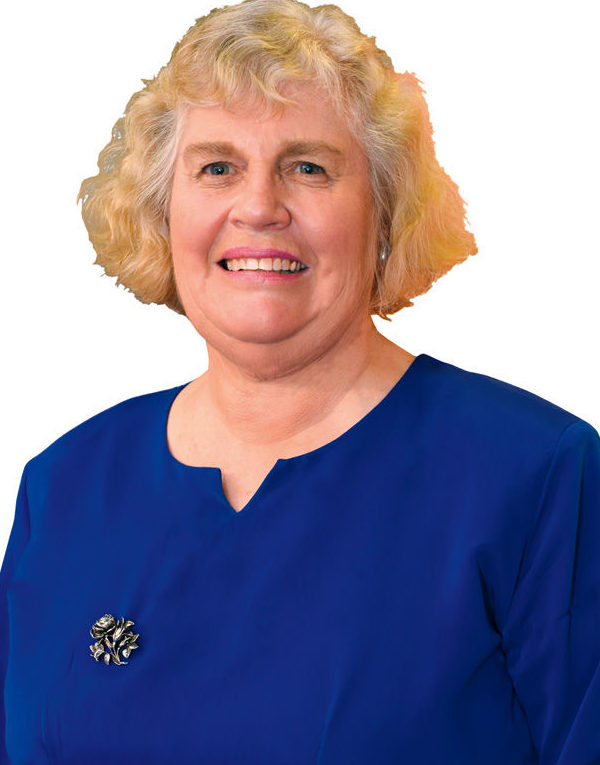
“It pains me to become The Grinch Who Stole the Minister’s Vision, but the talk, the detailed action plans and the forms to fill out will never make Canberra the arts capital until the political will to do so is manifested much further up the food chain than the ACT government,” writes arts editor HELEN MUSA.
SINCE Tara Cheyne replaced Gordon Ramsay as ACT Arts Minister, she has been talking up her “statement of ambition” for Canberra to become Australia’s arts capital, despite snickering from Sydney and Melbourne.

Now it’s out in black and white (and lots of colour) in the form of a written arts policy: ”Canberra: Australia’s Arts Capital – Arts, Culture and Creative Policy”.
It mightn’t have been as sexy as yesterday’s (July 29) an announcement of $28.44 million to develop the Canberra Theatre Centre, but Minister Cheyne’s unveiling could, if followed through, prove more significant.
The policy and its action plan are described as: “The roadmap the ACT government will take for Canberra to be recognised as Australia’s arts capital as articulated in ‘Canberra: Australia’s Arts Capital – a statement of ambition for the Arts 2021–2026’.”
It is accompanied by several fairly stuffy papers, including the “ACT Arts Organisation Investment Program Framework” and the “Remuneration Principles and Practices” paper, which specifies that artists should be paid for their work, so complicated that you can understand why some artists flee the funding scene and try to fund themselves or else go interstate. It might have been wiser to have held these off until a later date.
Optimists are hopeful that the policy will mean salvation for Canberrans who, the papers report, are highly creative, with a 92.5 per cent attendance rate at cultural venues and events, but ACT Opposition spokesperson for the arts, Nicole Lawder, notes the serious lack of direct funding or support for artists in Canberra and labels the printed policy release as “a glossy booklet filled with outdated statistics and trendy buzzwords”.
But there is also the “Action Plan”, outlining how and when the ACT government will deliver the policy’s strategies aimed at achieving the grand “ambition” to make Canberra the country’s arts capital.
As part of the “how”, three key strategies are identified – “Create, Develop, Promote”, spelt out as creating amazing art and culture, developing arts, cultural and creative industry, practice, and facilities and promoting them all.
Ten focus areas are identified with, front and centre, the stated aim to “elevate Aboriginal and Torres Strait Islander people’s cultural and artistic practices”.
But with the grand visions such as “exploring how to position Canberra internationally as a city of design”, “developing a public art strategy for the ACT” and “ensuring there is a diversity of voices on the Minister’s Creative Council,” there is the detail.
Specific examples of action include setting up a Winter Innovation Festival, continuing the partnership with Wellington City Council to deliver the Canberra-Wellington [NSW] Indigenous artist exchange, co-ordinating regular meetings with larger cultural institutions, supporting contact between the arts, business and academia, upgrading Gorman and Tuggeranong Arts Centres, expanding Canberra Museum and Gallery, and reviewing the Cultural Facilities Corporation Act 1997.
There are also plans for commissioning a new public artwork by female or non-binary artist and preparing a new ticketing system for the Canberra Theatre Centre that, they say, will increase understanding of audiences in the economic impact of the productions to play on its stages.
Glaringly omitted in all the self-satisfaction is any sense that the arts survive because of passionate individuals who make things happen, until exhausted by persistent underfunding.
There is nothing wrong, per se, with a bit of ambition and the many hundreds of people who labour in the Canberra arts day and night exhibit that in spades, but ministerial hyperbole should be balanced with a cool dose of reality.
To be sure, Canberra is home to national institutions such as the NGA, the NPG, the NLA, the NMA and the NFSA, which are legally constituted and funded arts bodies, but alongside them is a proliferation of small organisations that assume to themselves the title “national” without any credentials to do so.
Canberra is a reasonably large city by Australian standards, a bit bigger than, say, Montpellier in France, but unlike its European counterparts, it does not support a full-time orchestra and far less a full-time professional dance or theatre company.
The difference is that in Europe funding the arts is perceived as both desirable and necessary for society, but not in Australia.
It’s partly lost in history, but Canberra’s Symphony Orchestra was never part of the ABC orchestras’ network that led to full-time state orchestras. Nor was it deemed necessary to establish by deed at the federal level a national orchestra, dance or theatre company, leaving those notoriously expensive performing arts to flounder.
As well, with a small population here, most of our performing artists quickly head for the big cities.
We have a fair track record of novelists and playwrights being honoured in the NSW and Victorian premiers’ literary awards, we have nurtured artists such as Daniel Riley, the new director of the Australian Dance Theatre and screen star Mia Wasikowska, prize-winning poet Geoff Page and glass artists Matt Curtis and Jenni Kemarre Martiniello.
This confirms that Canberra is a first-rate seeding ground for the arts, but they are the exceptions that prove the rule.
And only in the professions that have benefited from the ANU’s schools of art and music, can artists maintain a lifelong practice in Canberra.
Quality suffers. Underfunded and driven to the co-operative model of payment for artists (this is mentioned in the remuneration paper), there has been of late a proliferation of small theatre companies popping up that claim to be professional, but are not.
Each year, I look in vain to report on Canberrans shortlisted in Archibald, the APRA/AMCOS music awards (one this year and a couple born in Canberra) the Miles Franklin or, with occasional elite exceptions, the Australia Council’s list of residencies and major grants.
It pains me to become The Grinch Who Stole the Minister’s Vision, but the talk, the detailed action plans and the forms to fill out will never make Canberra the arts capital until the political will to do so is manifested much further up the food chain than the ACT government.
Who can be trusted?
In a world of spin and confusion, there’s never been a more important time to support independent journalism in Canberra.
If you trust our work online and want to enforce the power of independent voices, I invite you to make a small contribution.
Every dollar of support is invested back into our journalism to help keep citynews.com.au strong and free.
Thank you,
Ian Meikle, editor




Leave a Reply